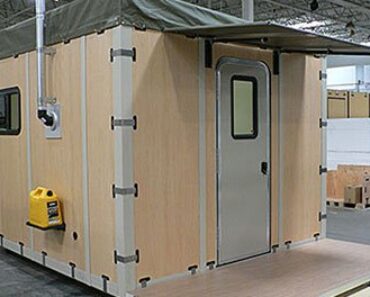At one time or another, you will likely need the services of an architect or a civil engineer to create one or more extensions in your home. There can be many reasons behind your decision, ranging from a need for more space for additional family members to creating your own customized house.
Let us see how you can go about preparing to build additions to your home:
1. Determine the Scope and Budget
First and foremost, figure out the overall scale of the project. Here, it is pertinent to note that any home addition project is roughly akin to building a house. This is because it involves approximately the same budgeting, designing, contractors, permits, and subcontractors. As with every other construction project, you will have to build the structure right from the ground up. This is why it is so important to be well prepared for all of the groundwork involved. It is also essential to be as realistic about the budget as possible. It would help if you did not aim for any house extension that is well outside your budget; otherwise, you might end up in debt.
2. Secure Funding for your project
Many cannot pay for all of their house additions on a cash basis alone, if not most homeowners. This is why they usually require a loan or even a line of credit, as and when needed. Unless there is an amiable uncle or other relatives around, they will almost certainly need a second mortgage, home equity, or even a credit line based on the value of their currently owned properties.
3. Select a Good Contractor
Your whole project will essentially depend upon finding a great contractor who will listen to you and will be someone that you can work with. It is essential to talk to people who have already constructed house additions to find such a person. A mere yellow pages intro won’t cut it. After all, we are talking about your home here.
You can never underestimate the critical importance of a good contractor. Such a person will come up with cost and time-saving strategies and ensure that everything is done on time, on schedule, and well within your budget.
4. Consider Working with an Architect
While it is undoubtedly true that at least some contractors might be able to design any number of house extensions or works from various stock addition plans, it is not always the best option. It is best to go ahead and hire a proper architect in many cases. If you don’t know of any good one, you should ask your contractor to recommend one to you. Thanks to this arrangement, you might end up with two parties who not only know each other but are also relatively accustomed to working well with each other. This way, they will be able to work smoothly, just like they have always done so before. However, this arrangement might work for them but not for you. This is why you should always try to perform the same level of due diligence as you did when you first selected your contractor.
5. Obtain All Necessary Permits and Prepare the Site for Construction
It is the responsibility of your contractor to obtain permits. Your contractor/s will need to post all of the relevant approved permits in a visible spot on the property where construction is taking place.
They will drop off portable toilets and put up prominent signage that will inform the world that the site is under construction by so and so companies. They will need to prepare the area by removing all obstacles such as trees, old buildings, etc. Your fences might be removed to allow ease of movement for heavy-duty construction equipment.
6. Build the Foundation Of the place
The addition will also get its very own full-scale foundation. In this respect, it is also just like a brand new house. Depending entirely on your plans, your house building crew will commence pouring a solid concrete slab. If that is not possible, they will start excavating for a basement or crawlspace as per your design parameters. This will be followed by pouring heavy-duty concrete footers as well as their accompanying foundation walls.
7. Frame the Overall Structure
As soon as your house addition’s foundation-level concrete is fully cured, it will be time for your crew to put up the walls, floors, and roof so that there is a proper framework to be seen. It will be pretty sudden. One fine day, you will come home from the office and et voila! Suddenly, your home addition has a frame along with three or even four walls. This is because the framing that is the addition’s skeletal structure can be raised from the ground up very quickly indeed. As a matter of fact, with a few prefabricated structures, the framing might even be constructed at an off-site factory. At this point, you might feel that the project is in its ending stages. However, that is not true at all since there is still plenty of work left.
8. Add the Roofing and Sheathing
Wall roofing and sheathing are an integral part of the whole home addition operation. They are necessary if you want to protect all of the complex construction work that has yet to be completed. Wall sheathing panels of various types and brands (as per your crew’s and your requirements) will be installed both efficiently and quickly. They will then be covered with lots of house wrap placed on the outer side of the sheeting panels. This is done to make sure that the delicate construction work remains safe from the elements. Single sand or rainstorm can wash away a lot of the wet cement and other unfinished work and set your project back by days or even weeks. Once the roofing is completed, it will appear that the project is moving ahead at a relatively brisk pace.
9. Time to Install the Doors and Windows
It is now time to install the brand new doors and windows. They will behave just like the exterior walls, as well as the roof of the structure. Not only will they further button up your as yet unfinished structure, but they will also get to keep it waterproof for all further work. Construction experts usually refer to this stage as the “dried-in” stage. This means the interior is well protected from the outside.
Finally, throw in the wiring and a good paint job, and you are done.
10. Motivation is the Key Here
Making plans is all well and good. However, you will need a lot of energy and motivation to get the desired results. It is crucial to realize that there are many disappointments and delays in just about any construction project. If you get disheartened and demotivated before the job is complete, you might not be able to get all of your design parameters completed. As a result, you may not enjoy your new additions as much as you should have before.
This is why the importance of feeling energized and motivated when preparing for building an addition into your house can never be over-emphasized, as such. There are different ways to do so, such as through exercise, healthy meals, taking vitamins, etc. Sugar-free gummy vitamins usually go a long way in ensuring that your energy and motivation levels are always at their peak. You can enjoy working on all of your projects in this regard.
11. Add the IoT to your New Lifestyle
The Internet of Things (IoT) is here to stay. It means a more wired home where you are in control of everything. It would help if you considered all the new devices you will need in this new addition. For example, you can have remote patient monitoring devices hooked up to your IoT’s operating system (OS) as they help you check your health. Apart from that, you might also consider setting up IoT-based speakers who will pipe your favorite music in your new home additions. You can activate them by voice commands alone. You can also set smart lights to work whenever you enter or leave a room. This will not only save energy but also wow your friends too. You can even select these lights as per your mood—bright white for when you are working to a soft glow when watching a movie. There are many different aspects to using the IoT and making it a part of your new home addition/s.
Conclusion
The above steps are significant in constructing new extensions and additions to your home or any other property. You will need to hire a good contractor and architect and prepare the site for construction once you have the budget to go ahead with the project.




























